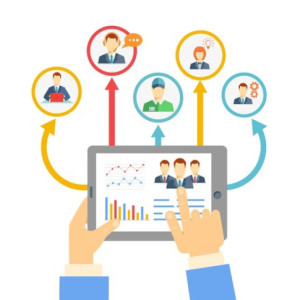You’re probably familiar with the concept of the post-game analysis. A post-game analysis is part of the debrief process that serves as an opportunity to evaluate performance, identify opportunities for improvement, optimize strategies, and revise processes if necessary. The debrief can be used to analyze and improve any effort – the launch of a new product, the implementation of a new customer process, the execution of a major event or following a crisis.
The Heart and Soul of the Debrief Process
Good debriefs start long before the actual debrief meeting. You will derive more from the debrief if you take the following four steps:

- Schedule the debrief ahead of time. When preparing for an important event, such as a product launch, execution of a customer or industry event, etc. schedule the debrief for the first business day after the event. There should also be a debrief after you have data to determine the actual results of the event. For an unexpected crisis, make it a point to communicate that there will be a debrief and what specific outcomes will signal its timing. For example, as we move through the recent health emergency, conversations around how to reopen communities and industries serve as a signal to schedule the debrief.
- Identify who will lead the debrief. Designate who will lead the debrief in advance and clarify that this person owns the debrief process. For example, the customer success director might be designated to lead the debrief of the annual user event. We recommend you have a documented process map for the debrief. Some key elements of the process the lead can facilitate are creating the agenda and meeting objectives, managing the meeting logistics and participants, facilitating the meeting, and the post-meeting action plan and follow-up.
- Conduct the debrief. Create structure by focusing on the purpose of the initiative, the expected results, and the actual results. Debriefs should at a minimum identify and analyze:
- lessons learned, what went well, and what were the break points
- specific processes that worked and which ones need improvement. To illustrate this idea, we can again look to the corona virus and the protocols many organizations put in place “on the fly” to support remote communication and collaboration. Some organizations didn’t have processes to guide their actions or the existing ones fell short. For example, financial institutions have processes in place to support customer communication, but many of these organizations struggled with communicating about the payroll protection program (PPP) and working with commercial customers at the local level. The were process gaps between the corporate entities, the branch personnel on the ground, and the customers.
- new actions that were employed and decisions about whether these should become a permanent part of the process going forward. Some organizations leveraged agile processes such as sprints to support work. Many may decide to keep this process going forward.
- what new tools, systems, skills, expertise, and experience are needed to improve performance
- which “players” rose to the challenge and which ones need to make improvements
- performance results against the expected results. This suggests that there was a performance target at the outset, such as a number of conversations that will emerge as a result of producing or participating in a major event, or the number of people who will trial a new product within some period of time upon its release.
- what actions you will take to as a result of the debrief, and who owns the action and the timing for implementation. Determine whether upcoming efforts need to be adjusted based on your findings.
How to Look Back to Move Forward
 In the world of sports, games are recorded. These recordings are a vital part of the post-game analysis because they provide valuable data. In the business world, we don’t typically have a recording as a reference, therefore, we need to bring other data to the debrief to support the review. Before going to the debrief, identify the data you will need to support the post-game analysis, such as the expected versus actual results, timing, and revenue.
In the world of sports, games are recorded. These recordings are a vital part of the post-game analysis because they provide valuable data. In the business world, we don’t typically have a recording as a reference, therefore, we need to bring other data to the debrief to support the review. Before going to the debrief, identify the data you will need to support the post-game analysis, such as the expected versus actual results, timing, and revenue.
Processes matter. Post-game analysis provides you with an opportunity to define, document, and refine your processes to stay competitive and optimize performance. Marc Hafner, CEO of Revionics nicely sums up the value of the debrief: “business organizations are successful because they’re willing to accept that they’re not perfect, go back and review what happened, make changes as necessary, and move on.“
Business & Finance Articles on Business 2 Community
(62)





